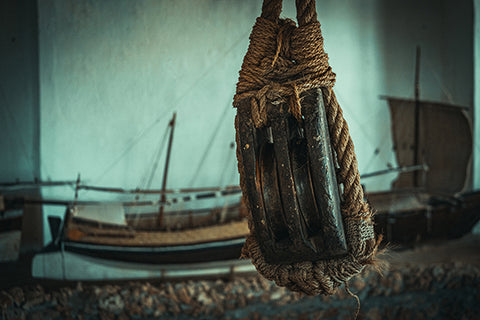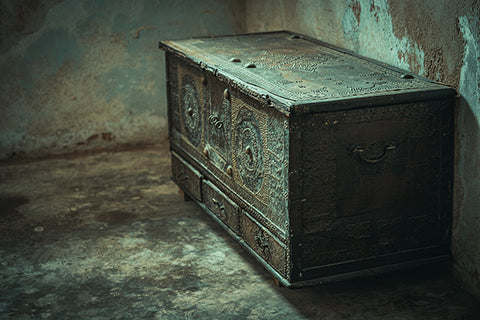LAMU - GOLDEN AGE

VIDAKA / NICHES
When looking at the history of Lamu, it is easy to think that the golden age from the 17th to 19th century was an isolated event. But the island was founded in the 12th century, and for centuries the region became a melting pot of culture, art and trade. For this reason, it is easy to see why Lamu (or Amu, as it is called by locals) was originally called Kiwa Ndeo, or the Vain Island.

FAMOUS LAMU DHOW EYE
The eastern coastline benefited from the convergence of multiple cultures—including those from the Arabian Peninsula, China, India and South-East Asia. In fact, there are multiple accounts of the Chinese settling in this region after Admiral Zheng He’s fleet sunk near the island in 1415.

ADMIRAL ZHENG

LAMU DHOW ART PIECE
Lamu enjoyed a peaceful period under the governance of the Yumbe council of elders, which inspired introspection and the production of many great works of art and poetry. Women writers achieved a high status in Lamu, including Mwana Kupona with her poem “Advice on the Wifely Duty,” and the Lamu waterfront became a bustling place of trade in cereal.

LAMU ROOFING ARCHITECTURE
 VIDAKA / NICHES & HAND CARVED COFFEE TABLE AND CHAIRS
VIDAKA / NICHES & HAND CARVED COFFEE TABLE AND CHAIRS
Also in the Lamu Archipelago is Pate Island, which found its golden age in the 18th century. Architects created some of the most intricate plaster buildings and homes, distinct with both Arab and Asian influences. Artisans crafted extravagant jewelry and fine woven silk clothing, while woodworkers produced elaborate carved and inlaid chairs. They also created instruments such as the Siwa, a side-blown horn which can still be seen in the Lamu museum today.

HANDCRAFTED UNIQUE DOOR PATTERN

HANDWOVEN BASKET
Lamu’s distinct heritage of culture and art continues today, with Swahili tables, chairs, boats and beds covered in unique ornate patterns. The region has hosted major Muslim festivals since the 19th century, including the annual Maulid Festival and the Lamu Cultural Festival. The National Museum of Kenya offers training programs that preserve the art of Swahili craft even to this day.
 ANTIQUE WOODEN TRUNK
ANTIQUE WOODEN TRUNK

LAMU CHAIRS BY LAMU ARTISANS
Lamu’s Current Culture
Today, Lamu is characterized by a labyrinth of narrow urban streets lined with buildings that date back to the 17th century. Swahili, Arabic, Persian, Indian and European inspired architecture make Lamu a cultural hub—perfect for tourists with a keen eye for diversity. The seclusion of archipelago and absence of cars also makes for a peaceful, almost nostalgic experience.

Today motorbikes are replacing donkeys fast as the preferred mode of transport in Lamu island. For centuries, Lamu’s charm brought about by its serene life, shielded away from modernity that has given visitors a taste of the ancient times. Local shops are always selling antiques, paintings, and traditional Swahili crafted furniture. In evenings, bask in the beautiful sunset while setting sail on a traditional dhow in the Indian Ocean.
 DONKEY RIDE
DONKEY RIDE
 DHOW RIDE
DHOW RIDE
Another draw of Lamu Old Town is the diverse foods. Delicious Swahili seafood seasoned with local spices make Lamu one of the best places in eastern Kenya for culinary delights. Many other cultures influence the dishes here—including Indian, Arabian and Portugeuse.

After dinner, Sheila Village is the perfect getaway from the more tourist-heavy Lamu Old town, and is only a fifteen minute boat ride from the main island. Or, if you’re interested in more culture, take a thirty minute boat ride to Manda Island to see the Takwa Ruins—an important trading hub in the 15th and 16th centuries.

TAKWA RUINS
 LAMU SUNSET
LAMU SUNSET
BLKBURD GENES© 2021
Los Angeles, California.
Images by Sebastian Wanzala for Blkburdgenes.
